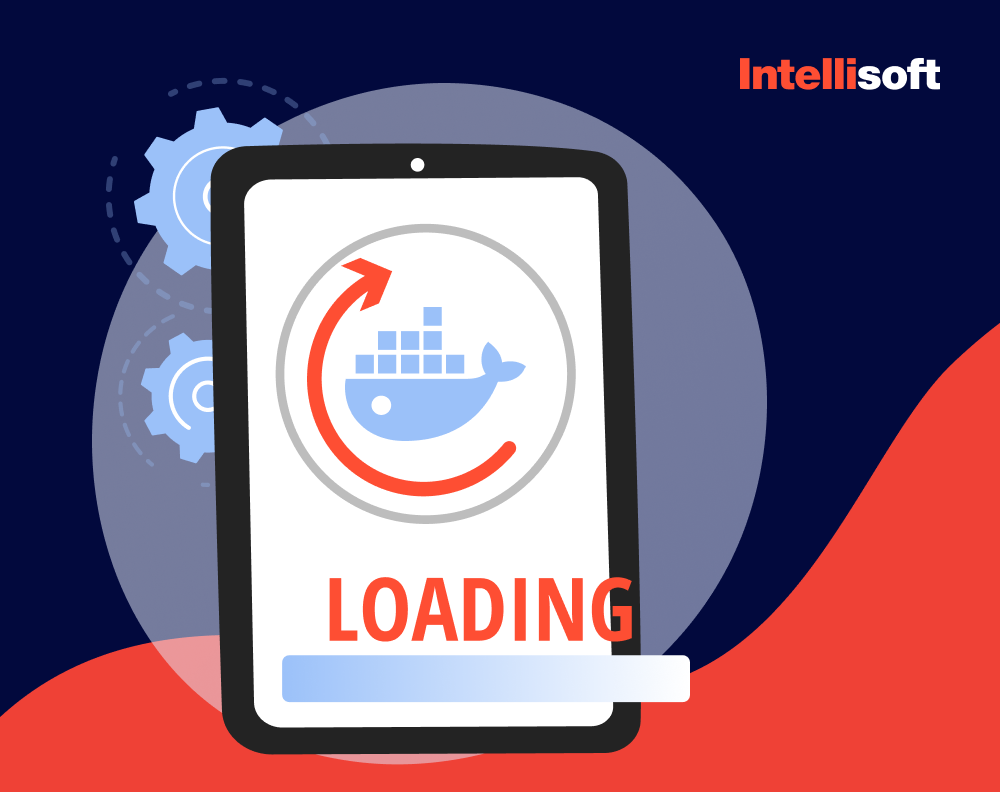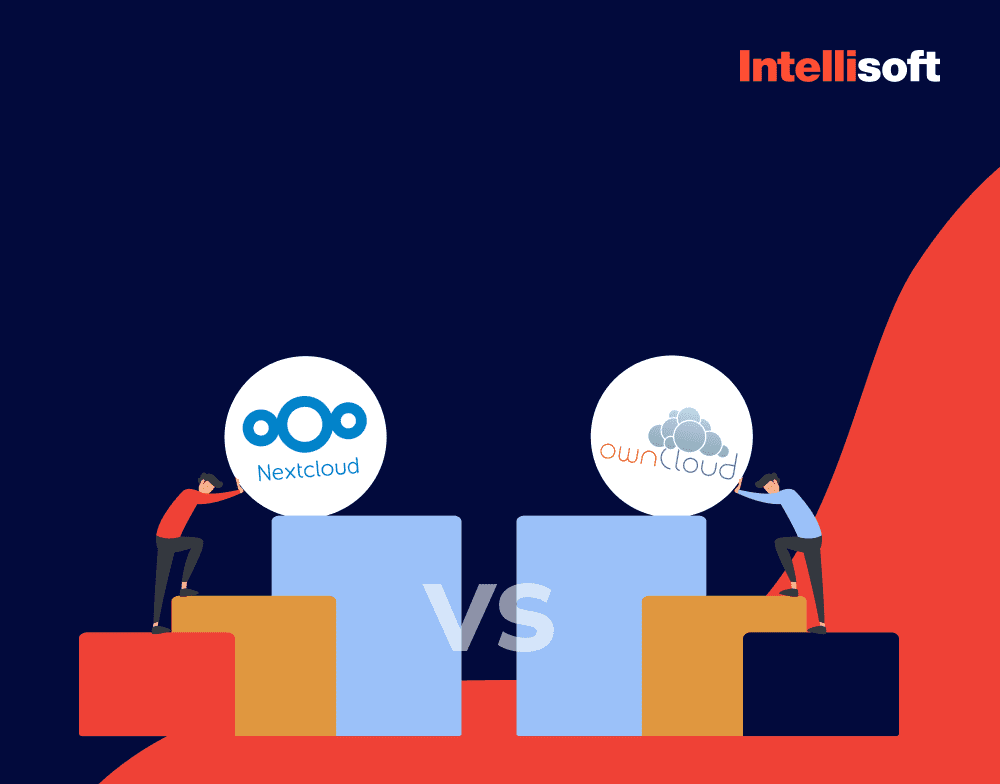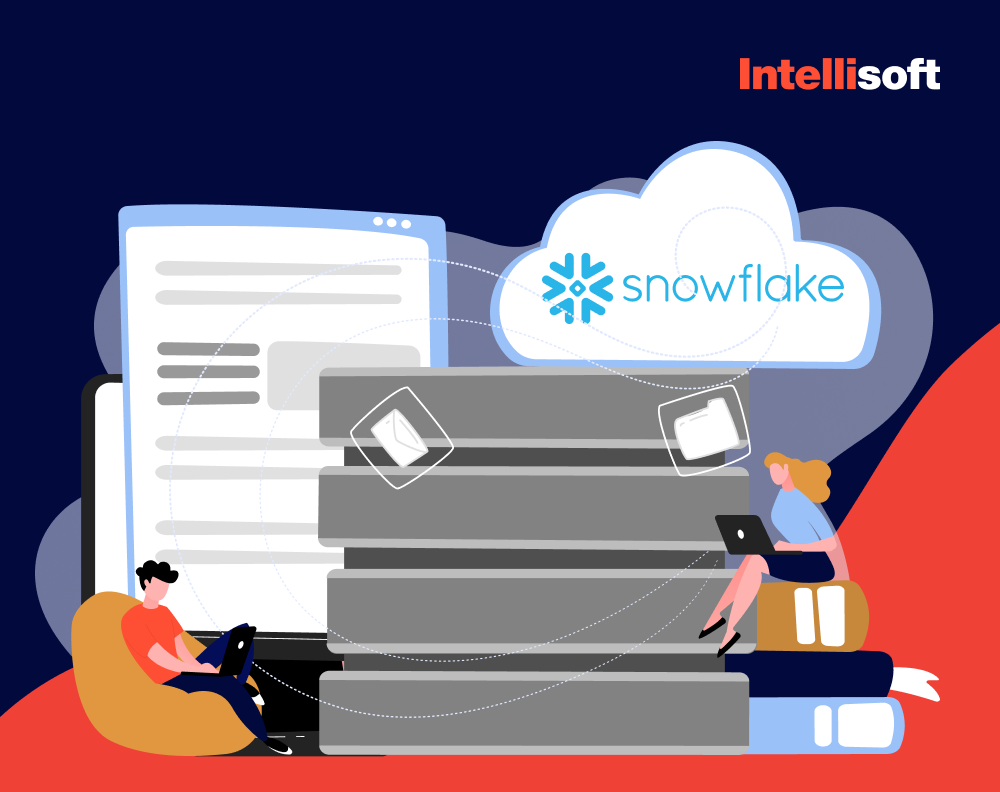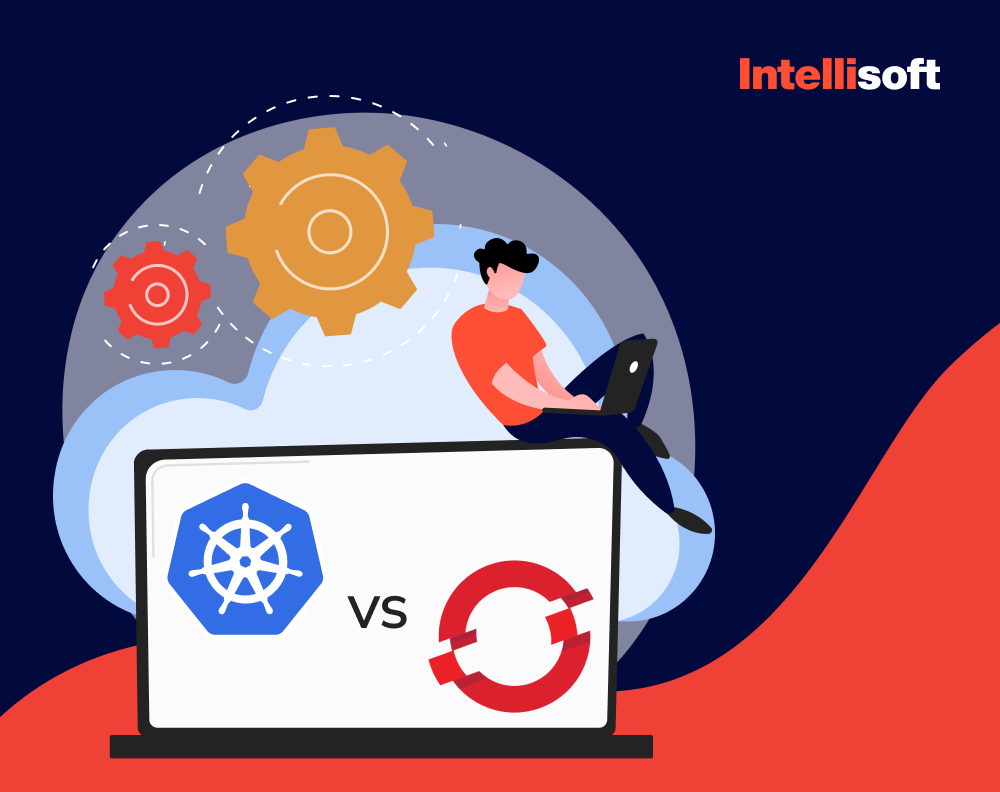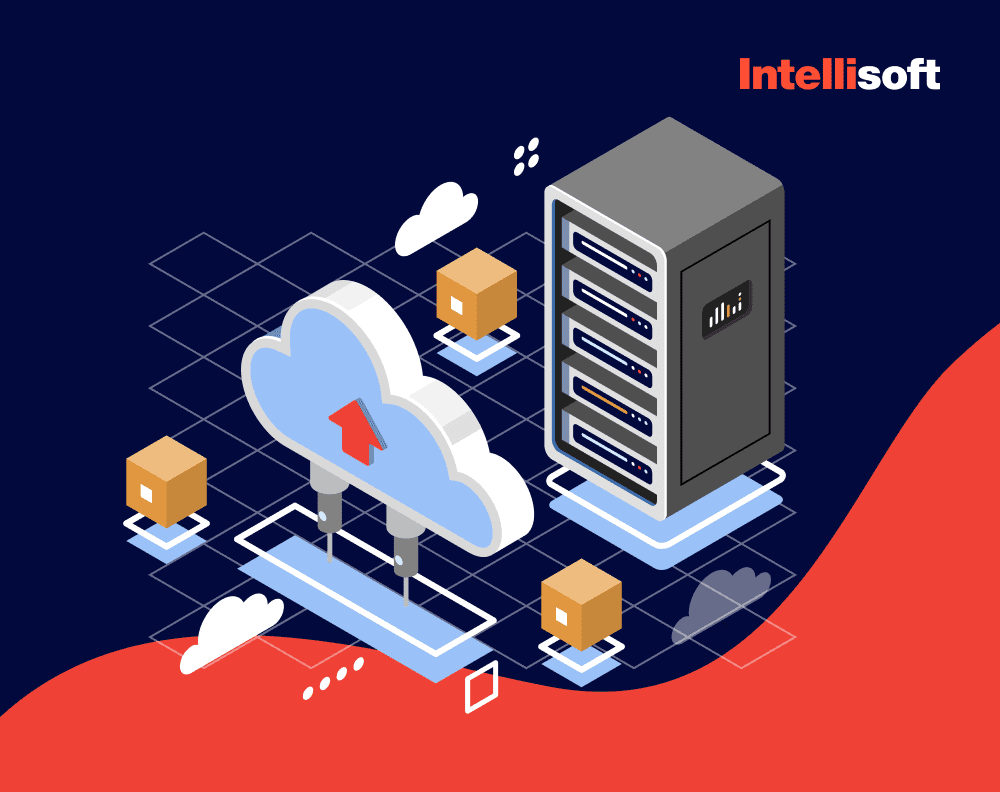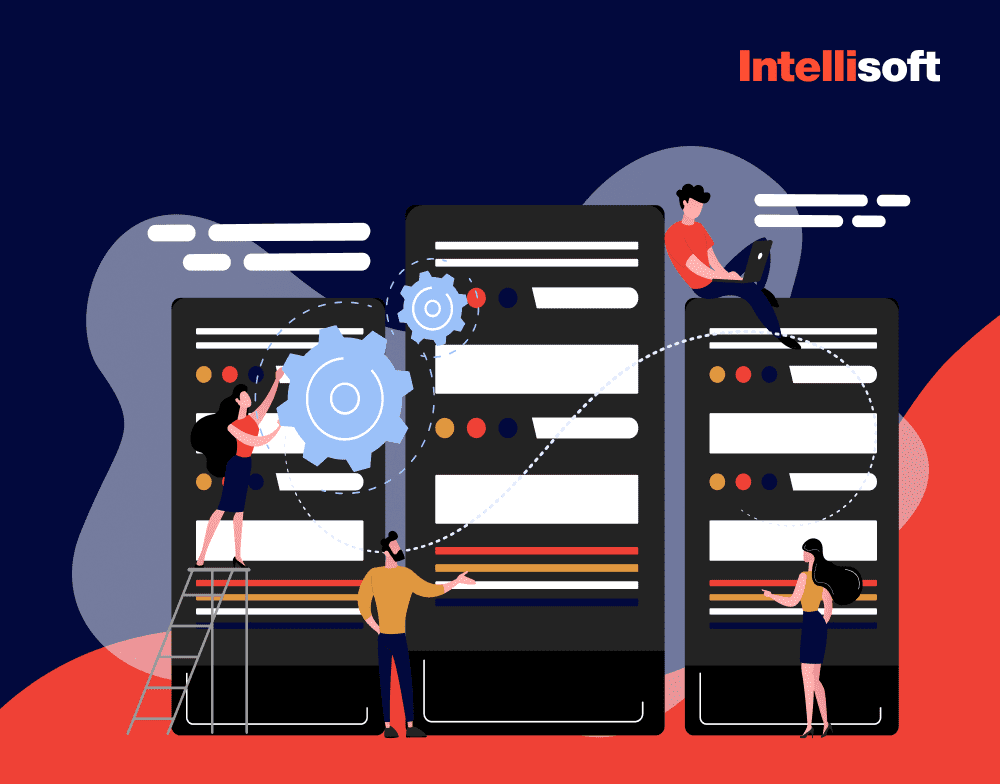What is load balancing in computing? It is like having a traffic cop at the bustling intersection of your network, ensuring that every server gets a fair share of the action. By smartly distributing incoming traffic across multiple backend servers, load balancing boosts the performance and reliability of web applications and APIs. Imagine it as a smart system that prevents any single server from being overwhelmed, instead routing requests in a way that maximizes efficiency and minimizes strain.
Think about it: if you have two web servers hosting the same website, load balancing allows you to divide the internet traffic between them seamlessly. This division means no single server gets overwhelmed. Both servers can then operate at peak efficiency, handling web traffic and workloads equally and effectively.
We’ll dive into everything you need to know—from the benefits and the various algorithms that ensure smooth traffic distribution to how balancers operate and the different types available. Get ready to understand the ins and outs of keeping your network traffic flowing smoothly and your servers running without a hitch.
Table of Contents
What is a Load Balancer
First, let’s learn what is load balancing router in computing. Imagine a bustling city intersection where traffic flows from multiple directions, and it’s crucial that each vehicle finds the smoothest route without delay. This is similar to what a server load balancer (SLB) does in the digital world. Acting as a high-tech traffic director, SLB can be set up as software or hardware to streamline the influx of client connections across a series of servers. It cleverly masquerades as a ‘reverse proxy,’ presenting the servers under a virtual IP address (VIP) to manage and distribute web traffic efficiently within a local network.
What is the minimum number of load balancers needed to configure active/active load balancing? At least two load balancers are required. This setup not only balances the load effectively but also provides essential redundancy, ensuring there’s always a backup ready to step in and keep the traffic moving smoothly, even if one balancer takes a break.

What Are the Components of a Load Balancer?
A typical load balancer is made up of four main components:
- Virtual IP. This serves as the unique digital address of the load balancer, enabling clients to direct their requests to it.
- Network protocols. Different balancers support various network protocols. For instance, a network load balancer is compatible with TCP or UDP protocols, while an application load balancer works with HTTP and HTTPS protocols.
- Load balancing algorithms. Load balancers employ diverse algorithms, including Round Robin and IP Hash, to determine which application instance should receive the client’s request.
- Health monitoring. The balancer regularly assesses the health status of each application instance.
The Role of a Load Balancer Explained
Imagine a Hollywood agent deftly negotiating a blockbuster deal for a star actor. The agent carefully assesses the actor’s demands and pitches them to a keenly interested party—a movie production company. The company reviews and tweaks the contract details before sending them back to the agent, who then presents the revised terms to the actor. This back-and-forth continues until they hammer out a deal everyone is happy with.
Now, let’s translate this dynamic into the tech world, specifically in server load balancing (SLB). Think of the load balancer as that savvy Hollywood agent. Its main job is to manage the online traffic across servers efficiently. Just like an agent tailoring their strategies based on the actor’s needs, the balancer adjusts its functions depending on how users interact with a website. It can restrict or permit access to data (enhancing security), and verify that the user is legitimate and not an impersonator (ensuring authentication).
In cases where the user’s location affects performance, akin to an agent choosing a different production company, the load balancer can redirect traffic to a server in a more optimal region. This geo-specific balancing ensures users get the best possible online experience, just as our agent strives to land the best deal for their client.
Functions of a Load Balancer
There are three key functions of balancers:
Traffic Distribution
- Load Distribution. This feature seamlessly distributes incoming traffic across multiple servers, ensuring that no single server becomes overloaded and creates a bottleneck. This smart distribution helps maintain smooth and efficient operations, preventing slowdowns and improving overall performance.
- Balancing Algorithms. The system uses advanced algorithms like round-robin, least connections, and IP hash to intelligently distribute the traffic load across the servers.
Fault Tolerance and High Availability
- Health Checks. Our system keeps a vigilant eye on server health to guarantee they’re always ready to handle your requests. Whenever a server shows signs of trouble or goes offline, we seamlessly reroute traffic to ensure uninterrupted service with other robust servers standing by.
- Failover. When a server goes down, our system instantly reroutes traffic to other functioning servers, guaranteeing uninterrupted service.
Scalability
- Horizontal Scaling. This capability allows for the seamless addition or removal of servers as per the fluctuating demand, ensuring that the system can handle varying loads without any downtime.
- Auto-Scaling Integration: It seamlessly integrates with auto-scaling solutions to dynamically adjust the number of active servers based on real-time traffic, ensuring optimal performance at all times.
How Does a Load Balancer Work?
We’ve learned what is load balancing in detail. And now, imagine a load balancer as a savvy sports agent for internet traffic. It presents a Virtual IP Address—think of it as a digital office where requests from clients are received. When a client connects, the balancer uses smart algorithms to decide which server, among many, should handle the request, similar to how an agent selects the best team for a star athlete.
This process isn’t a one-off—just as an agent constantly negotiates and manages contracts, the load balancer continuously monitors and manages the connection to ensure everything runs smoothly.
Now, the versatility of a load balancer, like our hypothetical agent, goes beyond just sending requests to servers. It also plays a critical role in security, acting as a gatekeeper to allow or deny access based on specific criteria, much like an agent filtering contract offers. It authenticates traffic to ensure it’s legitimate. It’s like verifying whether the person on the other end of a deal is actually the athlete.
And if things aren’t working optimally, just as an agent might scout for better team options in different leagues, the load balancer can reroute traffic to a different server network, ensuring the best possible performance and availability. This smart networking strategy is the essence of what makes balancers indispensable in managing web traffic efficiently.
How Does a Load Balancer Impact Business?
Investing in a load balancer, whether for a small or large-scale operation, is a strategic move that can yield substantial benefits for your business. This solution plays a crucial role in capitalizing on opportunities for growth and adaptability.
Discover how a load balancer can revolutionize how clients interact with your services and the overall experiences they enjoy:

- Business growth. As your business expands and the demand for your services surges, a load balancer empowers you to scale out to meet this demand seamlessly. This approach results in a high-performing and cost-effective solution for delivering applications to your customers.
- Business continuity. Implementing a load balancer enhances the resilience of your infrastructure, guaranteeing constant service availability. This method shields your business from downtime that could impact revenue or other vital operations.
- Business transformation. During digital transformation, businesses often seek to minimize complexity and disruption. A load balancer facilitates this essential goal by providing continuity across diverse environments and architectures and facilitating the smooth migration of traffic.
- Business optimization. By diminishing costs and enhancing performance, a load balancer not only optimizes the return on investment in your infrastructure but also instills optimism about your business’s financial health.
- Reputation protection. Offering a dependable and consistent experience safeguards your reputation and brand image. Moreover, a load balancer future-proofs your business in the face of unforeseen events.
What Kind of Traffic Can Load Balancers Handle?
Load balancers are like traffic cops for your network, managing the flow of data across two critical layers: the transport and application layers, known technically as layers 4 and 7. These layers handle different types of traffic using various protocols. For instance, HTTP is the go-to protocol for web applications, while TCP/IP serves as the backbone for a diverse range of services, from databases and message queues to mail servers and IoT devices. The digital world relies on these protocols and many others to keep information moving smoothly.
TCP/IP, short for Transmission Control Protocol/Internet Protocol, is the cornerstone of network engineering. It lays out the rules for how data should be packaged, sent, and navigated through various devices, forming the essential infrastructure of the internet.
Moving up the stack, HTTP, or Hypertext Transfer Protocol, serves as the critical communication bridge between web browsers and servers. Over the years, HTTP has evolved, introducing versions like HTTP/1.1, HTTP/2, and the latest, HTTP/3. Each iteration aims to overcome the limitations of its predecessors, with HTTP/3 leveraging a new transport protocol called QUIC to enhance how data streams operate.
On the lighter side, there’s UDP—or User Datagram Protocol. This connectionless transport layer protocol skips the formalities of establishing a dedicated connection before data transmission, which makes it fast and efficient, albeit without the safety net for error correction or lost data recovery.
QUIC, or Quick UDP Internet Connections, represents a significant leap forward. Running atop UDP, QUIC merges the best traits of TCP and UDP. It ensures reliable, orderly, and secure data transmission, all while slashing latency and boosting performance.
And that’s just the tip of the iceberg. The digital world relies on a plethora of other crucial protocols like DNS (Domain Name System), SIP (Session Initiation Protocol), RTSP (Real-Time Streaming Protocol), RADIUS (Remote Authentication Dial-In User Service), and Diameter, among others. Each protocol has a unique role, ensuring that our network and communication systems function seamlessly.
What Types of Load Balancers Are Out There?
To fully grasp the various types of load balancers, let’s delve into their historical development.
Network Server Load Balancers
First, we should learn what is network load balancing. Load balancers have come a long way, adapting seamlessly to the surging demands of internet traffic. Initially, these sophisticated tools—often referred to as Layer 4 or network server balancers—were all about efficiency. They skillfully managed incoming connections by diving deep into packet headers, examining a specific set of data known as the 5-tuple: source IP, destination IP, source port, destination port, and the IP protocol itself. This targeted analysis helped ensure that data flowed smoothly and reached its intended destination without a hitch.
Application Load Balancers
With the advent of application load balancers, also known as Layer 7, the role of load balancers expanded. Going beyond packet headers, these balancers introduced content awareness and switching. They analyze content such as URLs and HTTP headers, making more nuanced and context-aware decisions.
Global Server Load Balancing
What is global server load balancing? It is a different technology based on DNS. It acts as a DNS proxy to provide real-time responses based on load balancing algorithms. GSLB manages and monitors multiple sites through configurations and health checks.
Hardware vs Software vs Virtual Load Balancing
Load balancers have a rich history, beginning as hardware solutions. These hardware-based appliances were designed primarily to deliver high performance, making them ideal for installation within data centers. Unlike their software-based counterparts, hardware load balancers are standalone solutions that do not rely on hypervisors or commercial off-the-shelf hardware.
With the rapid advancement of network technologies, software-defined virtualization and cloud technologies have taken the lead. Software-based load balancing solutions offer unmatched flexibility and seamless integration with virtualization orchestration platforms. In cloud environments and software-based ecosystems, such as those using DevOps and CI/CD processes, software load balancers stand out for their adaptability and high level of integration, showcasing the potential of these technologies.
Elastic Load Balancers
What is elastic load balancing? These solutions are highly sophisticated, offering cloud-computing operators scalable capacity based on traffic demands. They scale traffic to applications in real-time and increase fault tolerance by distributing incoming application traffic across instances or scaling them as needed. This approach enables applications to handle varying traffic loads effectively.
What Are Load-balancing Algorithms?
An algorithm acts like a set of instructions guiding how a computer program operates. Imagine a load balancer as a traffic cop for network traffic, directing data across multiple servers to prevent any single one from getting overwhelmed.
Most balancers rely on dynamic algorithms, which adapt to current traffic conditions for optimal performance. Let’s break down how these smart systems manage the flow:
- Round Robin. Picture this as a game of pass-the-parcel, where each server takes a turn to handle a request. If you have three servers, the first request goes to Server 1, the second to Server 2, the third to Server 3, and then it cycles back to Server 1.
- Weighted Round Robin. This is a round-robin with a twist. Each server gets a turn based on its capacity; the stronger the server, the more requests it handles. It’s a bit like giving the biggest backpack to the strongest hiker.
- Least Connections. Here, the next request is sent to the server with the fewest active connections, akin to choosing the shortest checkout line at the grocery store. This method considers each server’s processing power to keep things running smoothly.
- Hash. This method directs traffic based on specific criteria, like the client’s IP address or the URL they request. Think of it as sorting letters in a mailbox based on the address written on the envelope.
- Adaptive. This high-tech approach uses real-time data from servers to make decisions. Each server reports its current status, helping the load balancer to route traffic to servers that are ready and able to handle more work.
- Random with Two Choices. This algorithm plays eeny, meeny, miny, moe with servers. It picks two at random, then uses the Least Connections rule to choose the final server, ensuring a balanced load without overburdening any single machine.
- Fixed Weighted. In this system, an administrator skillfully distributes server responsibilities, much like a team leader who delegates tasks in a group project. Each server is assigned a specific “weight” or capacity level based on its ability to manage traffic—ensuring that every server plays to its strengths.
What Are Some of the Common Load Balancing Solutions?
A load balancer acts like the traffic cop of the server world, smartly directing incoming traffic across multiple servers. This brilliant system prevents any single server from becoming overwhelmed, thus boosting speed and efficiency. Depending on the situation, the methods for distributing these requests can range from simple to complex, tailor-made to meet diverse needs.

Round Robin Load Balancing
What is round robin load balancing? Imagine a line of servers taking turns. Each server gets a turn to handle a request in a cyclic order. It’s a simple and fair way to manage traffic, though it has its limitations. It doesn’t consider the current load on each server, which might lead to some servers getting overwhelmed with high-demand requests.
Least Response Time Method
Step it up a notch using the least response time method. This smarter approach not only checks how quickly a server can handle a request but also gauges its current workload. It combines speed with savvy, aiming to connect users to the server that can offer the quickest and smoothest experience. This method often factors in the number of active connections a server is managing as well.
Hashing Methods
Dive into the details with hashing methods. These algorithms dissect various pieces of data from incoming packets—like IP addresses, URLs, or domain names—to decide which server should take the request. It’s a method that values precision, ensuring relevant factors are considered in the routing decision.
Least Connection Method
Unlike round robin, the least connection method plays it smart by considering the server’s current crowd. It directs new requests to the server with the fewest active connections, promoting a more balanced load and generally improving performance.
Least Bandwidth Method
Looking for simplicity? The least bandwidth method selects the server that’s pushing through the least amount of data at any given moment. This is similar to the least packets method, which picks servers based on the smallest number of packets handled over a specific period, ensuring no server gets swamped.
Custom Load Method
Tailor-made for your needs, the custom load method allows for a more personalized approach. Balancers can assess individual server loads—like CPU usage, memory, or response time—via SNMP. This allows administrators to set specific thresholds and combine them to optimize server performance.
Related articles:
- What is Cloud Computing? Understanding the Basics, Services and Benefits
- Healthcare in the Cloud: Transforming Patient Care and Data Management
- What Describes the Relationship Between Edge Computing and Cloud Computing?
- Ensuring Business Continuity: The Power of DRaaS and Cloud-Based Disaster Recovery
- What Are the Security Risks of Cloud Computing? Threads & Solutions
Load Balancer Use Cases
Unlock the full potential of your digital environment with these six essential use cases for load balancers, designed to enhance performance, reliability, and user experience:
Web Applications
Web applications can encounter fluctuating levels of traffic, particularly during busy periods. To maintain reliable performance and accessibility, a load balancer evenly distributes incoming HTTP requests among numerous web servers.
- Traffic Distribution: Spread incoming HTTP requests across several web servers to maintain consistent performance.
- Health Checks: Continuously monitor server health to ensure traffic is directed only to operational servers.
- Scalability: Seamlessly add new servers during high-traffic periods to avoid downtime.
Microservices Architectures
In a microservices architecture, various independent services interact with one another. A load balancer evenly distributes the workload among these services to ensure seamless operation and optimal performance.
- Service Discovery: Quickly locate and connect to the appropriate microservice instance.
- Inter-Service Communication: Distribute traffic evenly across microservices to prevent any single point of overload.
- Fault Tolerance: Automatically reroute requests from failed services to operational ones, enhancing system resilience.
E-commerce Sites
E-commerce websites must maintain uninterrupted service and quick response times, particularly when experiencing high traffic, such as during sales events. A load balancer is essential for managing large transactions and guaranteeing a seamless user experience.
- Session Persistence: Keep user sessions active on the same server to ensure a consistent shopping experience.
- Security: Defend against DDoS attacks and other online threats to keep your site safe.
- Performance Optimization: Offload SSL processing to free up server resources and boost site speed.
APIs
APIs play a vital role in managing the influx of requests from diverse clients. To optimize this process, a load balancer smartly spreads these requests across several API servers. This strategy not only boosts the system’s reliability but also enhances performance by ensuring no single server bears too much load. This way, it keeps the digital traffic flowing smoothly and efficiently, much like a traffic officer at a busy intersection.
- Load Distribution: Allocate API requests across multiple servers to ensure stable and responsive interactions.
- Rate Limiting: Control request frequency from clients to prevent system abuse.
- Monitoring: Keep an eye on API performance and redirect traffic away from troubled servers.
Cloud Services
Cloud services require the ability to adjust their capacity in real time to accommodate fluctuations in demand. This is where cloud-based load balancers come in. They evenly distribute incoming network traffic across multiple servers or instances, ensuring that the workload is balanced and the system remains available and responsive.
- Auto-Scaling Integration: Adjust server instances automatically as traffic fluctuates.
- Geographic Distribution: Route traffic to the nearest data center to minimize delays.
- Cost Efficiency: Optimize resource utilization and minimize operational expenses.
Content Delivery Networks (CDN)
Content Delivery Networks (CDNs) turbocharge your online experience by delivering content swiftly and reliably. By harnessing the power of edge servers located nearest to users, CDNs optimize speed and performance. At the heart of this system are load balancers, which expertly manage traffic across these servers, guaranteeing that your digital content arrives quickly and without a hitch.
- Global Traffic Management: Guide users to the nearest or quickest edge server for the best experience.
- Latency Reduction: Distribute traffic effectively to minimize delays and speed up content delivery.
- High Availability: Maintain constant content availability by smartly rerouting traffic away from failing servers.
Hardware vs Software Load Balancers
A hardware load balancer is a specialized physical device that evenly distributes incoming web traffic across multiple servers. It operates as an independent piece of equipment and has components and an operating system specifically designed for managing and routing traffic, often including SSL termination.
These load balancers are typically set up in on-premises data centers, often in pairs, to ensure continuous operation in case of a failure. By deploying these hardware balancers across multiple data centers, businesses can utilize GSLB, which minimizes the impact on users accessing web applications in the event of a data center outage.
On the other hand, while serving the same purpose as a hardware load balancer, a software balancer is not confined to a physical appliance. It can be flexibly installed on various platforms, such as physical servers, virtual machines, containers, or in the cloud. This adaptability empowers it to expand dynamically, catering to the increasing demands for web applications, a feature that may be a limitation for hardware appliances.
Hardware Load Balancer Pros & Cons
Let’s look at the pros and cons of a hardware balancer.

| Pros | Cons |
| Utilizes dedicated, rigorously tested hardware specifically for load balancing, ensuring robust performance and dependable traffic management. | Requires significant investment in hardware to handle peak traffic demands, ensuring high availability. |
| Offers a turnkey, plug-and-play solution, designed to seamlessly manage web traffic. | Increasing capacity necessitates additional hardware, which can complicate scaling efforts. |
| Needs on-site technical staff and infrastructure for installation and ongoing management. |
Software Load Balancer Pros & Cons
On the contrary, we review the benefits and drawbacks of a software balancer.

| Pros | Cons |
| Capable of leveraging cloud and virtualization environments. | The performance can greatly differ depending on the hardware employed. While commodity hardware may lack specialized chipsets and network interfaces found in dedicated systems, software solutions like HAProxy are optimized to perform comparably to hardware load balancers on the right setups. |
| Allows real-time adjustments to handle fluctuating web traffic efficiently, promoting high availability. | Some software load balancers may require substantial resources, which can impact scalability and cost-efficiency. HAProxy, however, is noted for its efficient resource management. |
L4 vs L7 Load Balancing
Layer 4 (L4) load balancing operates at the transport layer of the Open Systems Interconnection (OSI) model, expertly managing traffic with the help of TCP/IP and UDP protocols. It smartly directs traffic based on network data alone, without delving into the content of the messages themselves. This approach keeps your network efficient and swift, ensuring smooth digital operations.
Operating at this layer makes load balancing speedy and secure because it doesn’t require unpacking the contents of messages. However, it is not capable of the more sophisticated load balancing available at layer 7.
Layer 7 (L7) operates at the application layer of the OSI model and manages traffic using the HTTP/HTTPS protocol. Unlike L4, L7 makes traffic management decisions based on the content of the messages and performs health checks on the backend servers.
Operating at this layer allows for more efficient use of upstream server resources and potentially increases reliability. However, since it involves inspecting and modifying messages, L7 load balancing is not as quick and requires more processing resources. The higher processing requirements of L7 load balancing can introduce latency, which can be addressed by caching responses upstream.
Difference between an API Gateway and a Load Balancer
Let’s do the final comparison between an API gateway and a load balancer
API Gateway
An API Gateway is your ticket to making microservices more user-friendly and efficient. Acting as a bridge between your services and the outside world, it allows developers to integrate APIs into their applications, opening up a wealth of possibilities. It supports various protocols like HTTP, WebSocket, and REST and offers a customized experience for every user.
Here are some standout benefits of using an API Gateway:
- Boosted Performance. An API Gateway optimizes the flow of requests, ensuring your system responds swiftly and efficiently. It manages routing and load balancing so your services can handle more traffic and deliver faster responses.
- Streamlined Architecture. An API gateway acts as the ultimate simplifier in system architecture, providing a single, streamlined entry point to your microservices. This setup makes it a breeze for clients to connect with your services, cutting down on complexity and significantly boosting the user experience.
- Enhanced Security. Security is a top priority, and the API Gateway fortifies your defenses. It enforces strict access control and authentication measures, keeping unauthorized users at bay and protecting your system from potential threats.
- Scalability. As your needs grow, so can your system. The API Gateway efficiently distributes incoming requests across multiple service instances, allowing your system to scale without a hitch and handle increased traffic effortlessly.
- Improved Monitoring and Visibility. With an API Gateway, monitoring your systems becomes a breeze. It provides better visibility by distributing loads across various instances, ensuring that your services remain robust and scalable under any load.
Load Balancer
A load balancer is like the conductor of an orchestra, ensuring that every server in your network performs harmoniously. It’s essential for maintaining peak performance and preventing server overloads. By cleverly spreading incoming requests across multiple servers, a load balancer prevents any single server from becoming overwhelmed. This critical tool is key to keeping your digital operations running smoothly and efficiently.
Let’s explore how a load balancer can transform your system:
- Big Data Insights. In the world of big data, load balancers are the secret ingredient that lets businesses effortlessly sift through massive amounts of global user data. They enable organizations to extract actionable insights, paving the way for smarter, more informed decision-making.
- Boosted Efficiency. The goal of enhanced efficiency is central to any server system. Balancers lighten the load on individual servers, leading to more streamlined operations and quicker response times. Their critical role in boosting server efficiency cannot be overstated.
- Predictive Analysis. Advanced balancer software employs predictive analytics to foresee and manage traffic bottlenecks before they become problematic, ensuring your system remains efficient under varying traffic conditions.
- Resilience. With load balancers, system downtime is almost a thing of the past. They not only facilitate quick component replacement but also offer insights into when equipment needs updating or repair.
- Enhanced Security. Security is paramount, and load balancers add an essential layer of protection. They enhance security seamlessly without requiring modifications to your existing infrastructure, safeguarding your digital assets effectively.
- Scalability. Load balancers excel at scalability. They allow you to adjust your server infrastructure without impacting service quality, making it easier to scale operations to meet growing demands.
Comparison Table
To sum this section up, let’s put all the details together.

| Category | API Gateway | Load Balancer |
| Function | Serves as an intermediary between clients and microservices. | Distributes server traffic to enhance availability and balance loads. |
| Traffic Management | Manages traffic specifically for microservices. | Manages server traffic to prevent overloading. |
| Protocol Support | Supports a variety of protocols including HTTP, WebSocket, and RESTful APIs. | Primarily supports HTTP, TCP, and UDP protocols. |
| Security | Offers features such as authentication, authorization, and encryption. | Provides SSL/TLS encryption. |
| Monitoring | Delivers detailed analytics on API usage, latency, and error rates. | Offers basic monitoring of server health and performance. |
| Scalability | Capable of horizontal scaling to manage increased traffic. | Also supports horizontal scaling for increased traffic. |
| Deployment | Can be deployed as a standalone service or as part of a hosted solution. | Deployed either on-premises or as a cloud service. |
| Cost | Generally more costly than a traditional load balancer. | Usually less expensive compared to an API gateway. |
Conclusion
So, what is load balancing? It is a cornerstone in the architecture of modern computing, pivotal in boosting application performance, availability, and reliability. This technique smartly distributes incoming network traffic across several servers, ensuring no single server is overwhelmed. This strategy not only prevents downtime and eliminates performance bottlenecks but also enhances fault tolerance by seamlessly redirecting traffic from failed servers to operational ones.
Additionally, load balancing excels in scalability, effortlessly accommodating additional resources as demand spikes.Implementing load balancing strategically is crucial for organizations keen on streamlining their operations and delivering continuous service. As we navigate through an era of rapidly evolving technology and increasingly complex system demands, the significance of advanced load balancing strategies is set to soar, highlighting its critical role in cloud computing and other advanced IT landscapes.
At IntelliSoft, we have a pool of experienced developers and engineers who know how to handle load balancing and other approaches to distribute the network traffic. Contact us today to get personalized advice from our team.


